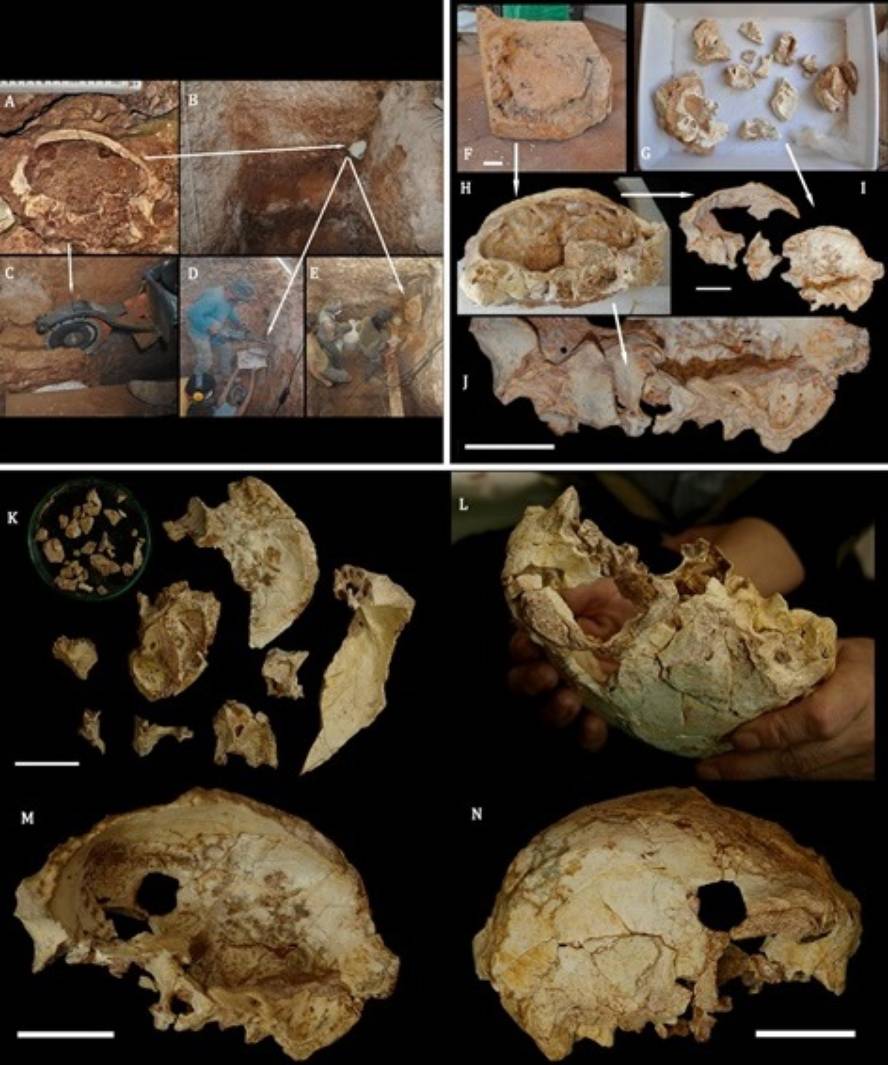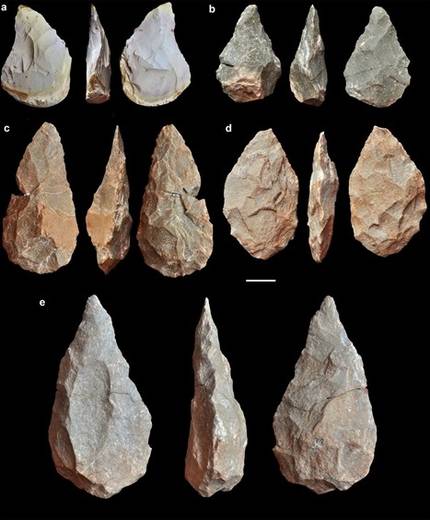The man of Aroeira, equal and special
Archaeologists have been working since 1987 at the Aroeira site. Fossils from different eras have been found, including a pair of teeth from the Osín de los Huesos de Atapuerca, and in 2014, stuck in the rock, a skull was found. Since then they have been studying and have now published the results of the research in the journal PNAS.
The article has determined that it is between 390-436 thousand years old, using uranium/thorium technique. Therefore, it has been located in the Middle Pleistocene, which according to archaeologists is the most interesting time to understand human evolution in Europe, since the fossils of the oldest Neanderthals and the instruments of Atxelian culture converge.
Atxelian culture was born in Africa a million years ago. In Europe, however, there are no remains of instruments of this culture until 500,000 years ago. Hence the importance of the human instruments and fossils of that time appearing in the same place. In the case of Aroeira, the Western presence has a special meaning for researchers, which highlights the rapid spread of this culture in Europe. In addition, stone utensils and animal bones, some of them roasted, have been found. Hence it follows that they dominated the fire.
The instruments of Atxelian culture and the remains of the use of fire have also appeared in other sites of the time, as is the case of Atapuerca. However, the study of the skull has shown that the man of Aroeira was not exactly the same as that of Atapuerca. It has been determined that it has joined several arches on orbits, as the oldest Neanderthals. For example, in Atapuerca, an individual from the site of the Gran Dolina had it. On the contrary, they are separated by skulls from other deposits of the same time.
All other features of the skull have been described in the article describing their nature and comparing them with other fossils, not only from the same time but also from Homo erectus, for example. And they have come to the following conclusion: Human beings who lived in Europe during the Middle Pleistocene were morphologically more different from each other than today among us. But, at the same time, culture spread rapidly across the continent. Hence his interest in the fossil of Aroeira, which helps to understand this epoch of evolution.







